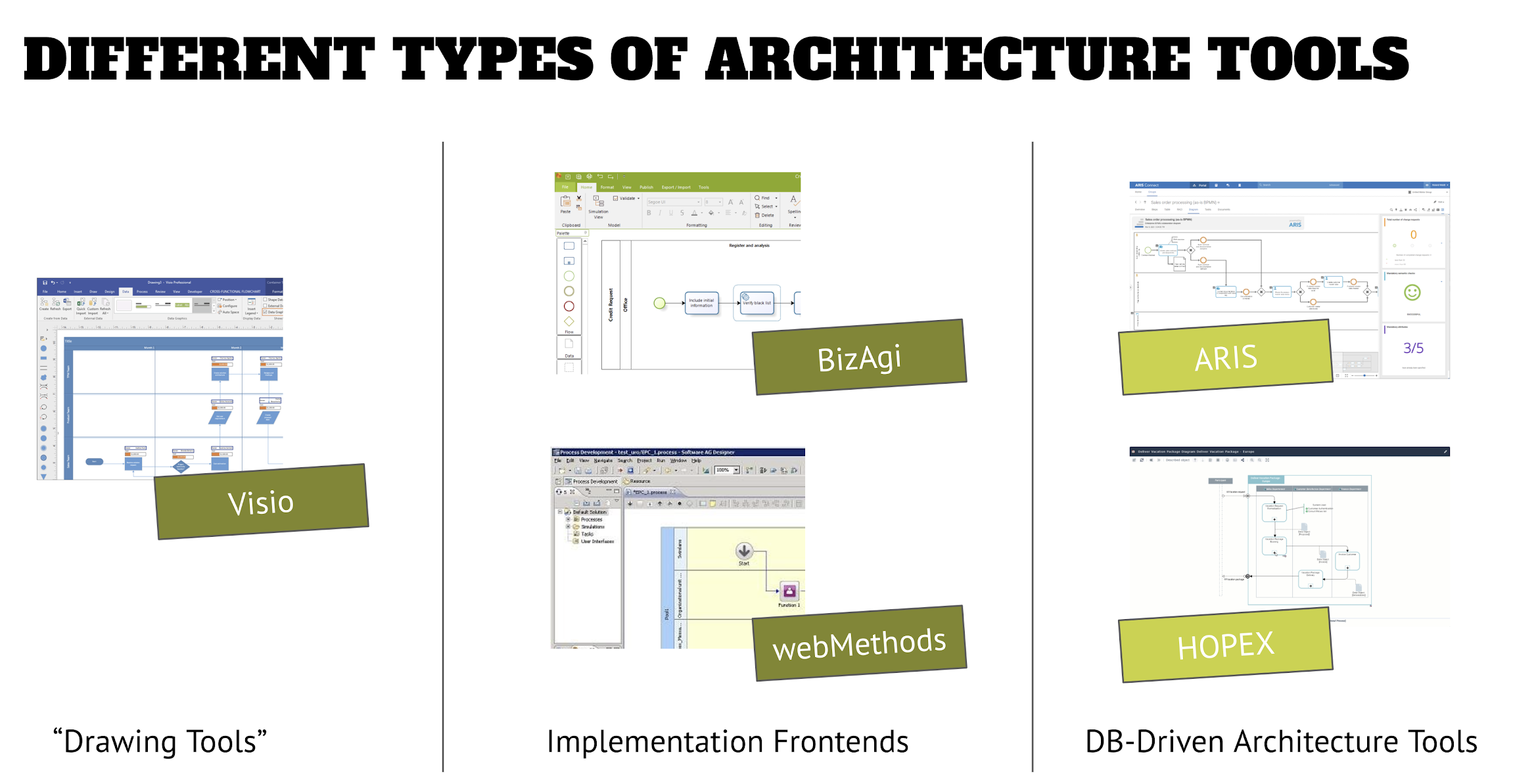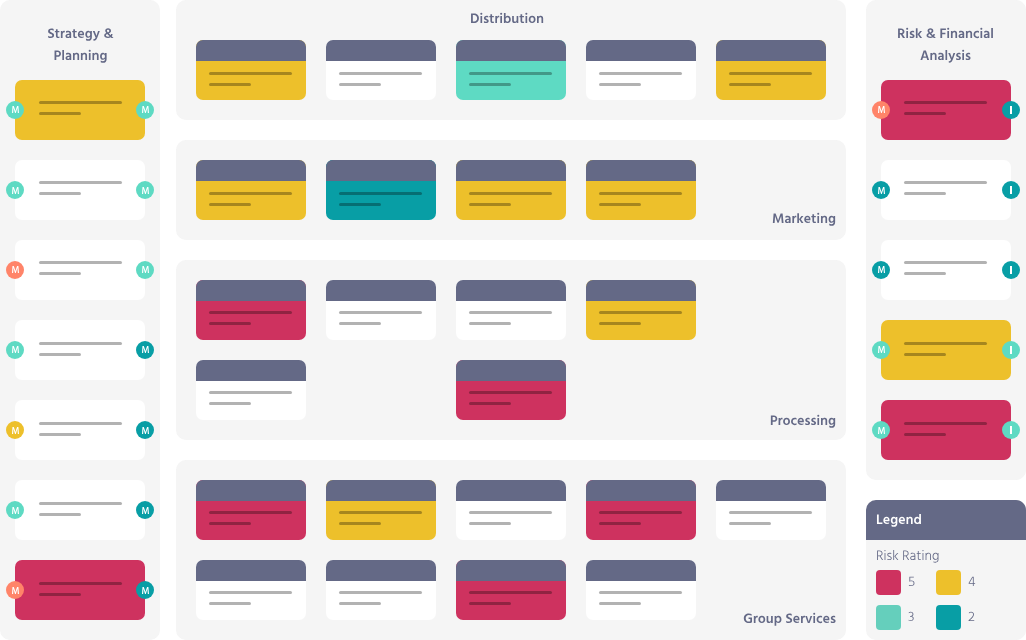Navigating the Maze: A Comprehensive Guide to Enterprise Architecture Tool Selection
February 12, 2024 in Enterprise architecture, Enterprise architecture Tools, Enterprise architecture Frameworks7 minutes
A comprehensive guide to selecting the right enterprise architecture tools to align IT infrastructure with business goals. Learn about EA benefits, top tools, considerations for selection, integrations and more.
Navigating the Maze: A Comprehensive Guide to Enterprise Architecture Tool Selection

Introduction
In today’s fast-paced and ever-evolving business landscape, organizations are constantly seeking ways to optimize their operations and drive innovation. One crucial aspect of this optimization is the selection of the right enterprise architecture (EA) tools. These tools play a vital role in managing and aligning an organization’s IT infrastructure with its business goals and objectives. However, with a plethora of options available in the market, choosing the right EA tools can be a daunting task. This comprehensive guide aims to provide you with the necessary insights and strategies to navigate the maze of enterprise architecture tool selection.
Understanding Enterprise Architecture
Before delving into the intricacies of tool selection, it is essential to have a clear understanding of enterprise architecture. In simple terms, enterprise architecture refers to the framework that defines an organization’s structure, processes, information systems, and technology infrastructure. It serves as a blueprint for aligning IT capabilities with business objectives, ensuring efficient operations and effective decision-making.
Some key aspects of enterprise architecture include:
- Business architecture - focuses on business strategy, governance, organization, and key business processes
- Data architecture - deals with the structure, flow, and governance of data assets
- Application architecture - encompasses the interactions between applications, their relationships and dependencies
- Technology architecture - focuses on hardware, infrastructure, and middleware components
With a robust enterprise architecture in place, organizations can gain valuable insights to make informed decisions and drive digital transformation. According to a recent survey, 78% of business leaders say enterprise architecture is critical to achieving their strategic goals.
The Importance of Enterprise Architecture Tools

Enterprise architecture tools act as enablers for organizations to effectively manage and govern their IT landscape. These tools provide a holistic view of the organization’s architecture, allowing stakeholders to understand the relationships between various components and make informed decisions. Some key benefits of using enterprise architecture tools include:
Improved Decision-Making: By providing a comprehensive view of the organization’s architecture, EA tools enable stakeholders to make data-driven decisions that align with business goals.
Enhanced Collaboration: EA tools facilitate collaboration between different teams and departments by providing a centralized platform for sharing and accessing architectural information.
Efficient Resource Management: With the help of EA tools, organizations can optimize their IT resources by identifying redundancies, eliminating bottlenecks, and streamlining processes. This can result in cost savings of 15-30%.
Risk Mitigation: By assessing the impact of changes on the overall architecture, EA tools help organizations identify potential risks and take proactive measures to mitigate them. Studies show that proactive risk management through EA tools can reduce failure rates by up to 60%.
Informed Planning: EA tools empower organizations to make changes in a structured manner and ensure those changes are in line with business priorities and goals.
Compliance: EA tools help organizations adhere to industry regulations and compliance standards by providing the necessary frameworks, policies, and governance.
Key Considerations for Enterprise Architecture Tool Selection
Selecting the right enterprise architecture tools requires careful evaluation of various factors. Here are some key considerations to keep in mind during the selection process:
Alignment with Business Goals
- The first and foremost consideration is to ensure that the selected EA tools align with your organization’s business goals and objectives. The tools should support the specific needs of your industry and enable you to achieve your desired outcomes.
Scalability and Flexibility
- As your organization grows and evolves, so will your architectural requirements. It is crucial to choose EA tools that are scalable and flexible enough to accommodate future changes and expansions.
Integration Capabilities
- Enterprise architecture tools should seamlessly integrate with your existing IT infrastructure and other relevant systems. This integration ensures smooth data flow and enables effective collaboration across different platforms.
Usability and User Experience
- The usability and user experience of the selected EA tools play a significant role in their adoption and effectiveness. The tools should have an intuitive interface, easy navigation, and robust features that cater to the needs of both technical and non-technical users.
Vendor Support and Reliability
- When selecting EA tools, it is essential to consider the reputation and reliability of the vendors. Look for vendors with a proven track record, excellent customer support, and a strong commitment to product development and updates.
Pricing and Licensing Models
- The pricing and licensing structure of EA tools is an important factor to evaluate. Consider options that provide flexibility and align with your budgetary needs.
Interoperability with Existing Systems
- Ensure the shortlisted tools can integrate and share data with your current IT infrastructure to maximize ROI on existing systems.
Popular Enterprise Architecture Tools in the Market
Now that we have discussed the key considerations for tool selection let’s explore some of the popular enterprise architecture tools available in the market:
TOGAF®: The Open Group Architecture Framework (TOGAF®) is a widely adopted framework for enterprise architecture. It provides a comprehensive approach to designing, planning, implementing, and governing enterprise architectures. Find TOGAF Guide
ArchiMate®: ArchiMate® is an open and independent modeling language that complements TOGAF®. It enables organizations to describe, analyze, and visualize their enterprise architectures, making it easier to communicate and align stakeholders.
Sparx Systems Enterprise Architect: Sparx Systems Enterprise Architect is a powerful and versatile tool that supports the entire enterprise architecture lifecycle. It offers a wide range of features, including modeling, documentation, requirements management, and collaboration.
Mega HOPEX: Mega HOPEX is an integrated software suite that covers various aspects of enterprise architecture, including business process analysis, IT portfolio management, and risk management. It provides a holistic view of the organization’s architecture and supports strategic decision-making.
IBM Rational System Architect: IBM Rational System Architect is a comprehensive enterprise architecture tool that enables organizations to model, analyze, and optimize their IT landscapes. It offers advanced capabilities for visualizing and managing complex architectures.
Software AG Alfabet: Alfabet provides capabilities for planning, documenting and managing IT enterprises based on ArchiMate and TOGAF standards. It offers strong portfolio management and impact analysis features.
Avolution Abacus: Abacus is a collaborative enterprise architecture tool that enables modeling, simulations, and dynamic reporting. It can integrate with other enterprise systems through APIs.
Frequently Asked Questions
Q1: What is the role of enterprise architecture in digital transformation?
A1: Enterprise architecture plays a crucial role in driving successful digital transformations. It provides a structured approach to aligning IT capabilities with business strategies, enabling organizations to leverage technology effectively. By mapping out the current and desired future states of the enterprise architecture, organizations can identify gaps and prioritize initiatives that drive digital transformation.
Q2: Can enterprise architecture tools integrate with other IT management systems?
A2: Yes, most enterprise architecture tools offer integration capabilities with other IT management systems such as IT service management (ITSM) tools, project management tools, and configuration management databases (CMDBs). This integration ensures seamless data flow and enables organizations to have a holistic view of their IT landscape.
Q3: How can enterprise architecture tools improve collaboration between different teams?
A3: Enterprise architecture tools provide a centralized platform for sharing and accessing architectural information. This enables different teams and departments to collaborate effectively by having a common understanding of the organization’s architecture. It promotes cross-functional communication, reduces silos, and fosters collaboration towards achieving common goals.
Q4: Are there any industry-specific enterprise architecture tools available?
A4: Yes, there are industry-specific enterprise architecture tools available in the market. These tools cater to the unique needs and requirements of specific industries such as healthcare, finance, and manufacturing. They often come with pre-defined templates, frameworks, and best practices tailored to the industry’s standards and regulations.
Q5: How can enterprise architecture tools help with compliance and risk management?
A5: Enterprise architecture tools enable organizations to assess the impact of changes on the overall architecture, helping identify potential risks and compliance issues. By having a holistic view of the architecture, organizations can proactively address risks, ensure compliance with regulations, and implement effective risk management strategies.
Conclusion
Selecting the right enterprise architecture tools is a critical decision that can significantly impact an organization’s ability to align its IT capabilities with business goals. By considering factors such as alignment with business goals, scalability, integration capabilities, usability, and vendor support, organizations can make informed decisions and choose the tools that best suit their needs.
Additionally, popular tools such as TOGAF®, ArchiMate®, Sparx Systems Enterprise Architect, Mega HOPEX, and IBM Rational System Architect offer robust features and functionalities to support the entire enterprise architecture lifecycle. With the right tools in place, organizations can navigate the complex maze of enterprise architecture and drive successful digital transformations.
Remember, the selection of enterprise architecture tools is not a one-time process. As your organization evolves, it is essential to regularly reassess your toolset and make adjustments to ensure continued alignment with your business goals and objectives. Investing in the right enterprise architecture tools
Find more about our conprehensive Enterprise Architecture Guide
Find more about our framework guide on Framework Docs